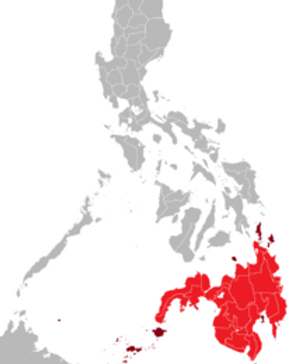Why Mindanao?
The Situation
The Philippines ranks 4th in the world for the amount of child trafficking and exploitation that takes place within its shores and to other countries.
The Philippines is a source and, to a much lesser extent, a destination and transit country for men, women, and children who are subjected to sex trafficking and forced labor.
People are trafficked from rural areas to urban centers including Manila, Cebu, the city of Angeles, and increasingly to cities in Mindanao, as well as within urban areas.
NGO and government reports indicate that children are being sold into sexual slavery or forced labor by parents who are desperate to stay alive.
There are a number of high-risk factors in the Philippines that can contribute to human trafficking. These include:
- Conflict between Moro Islamic Liberation Front (MILF) and the Armed Forces of the Philippines (AFP) left between 128,000 and 160,000 vulnerable individuals displaced in 2010.
- Poverty, population growth, and dependency burdens have lead some parents to see child labor as a means to cope with meager family incomes.
- Pervasive and persistent poverty, especially in rural areas, high unemployment and underemployment and constraints to small and medium enterprises growth are a few of the challenges facing the Filipino labor force that have lead many to migrate for work.
- Presence of a large informal economy, estimated to be between 40-80% of Filipino workers, who are for the most part not registered or recorded in official statistics and are beyond the reach of social protection and labor legislation.
- An estimated 900,000 undocumented Filipinos, mostly based in Mindanao, whose lack of official documentation contributes to the population’s vulnerability to trafficking.
- An established organized crime network that plays upon the above factors and fraudulently recruits persons for jobs that are in reality forced labor situations.
- Persistent law enforcement officials’ complicity in human trafficking and corruption at all levels of government that enables traffickers to prosper.

FACTS ABOUT MINDANAO
Mindanao (Pronounced Min-du-now) is the second largest and southernmost major island in the Philippines.
- Approximately 21 million people
- Eighth most populous island in the world
- The island has 22 provinces
- Cebuano is the primary dialect
- 36.8% of the population lives below the national poverty level
- 45.7% live on less than $2/day
- 17.4% ages 15-24 are unemployed
- Crime rate is higher in Mindanao than in Luzon and the Visayan Islands
- The primary religion is Roman Catholicism followed by Islam
- Fighting between government troops and Muslim rebels, separatists, and terrorists continue until now.
- Muslims groups are pushing for the establishment of Sharia law and autonomous government in Muslim dominated provinces.
Mindanao


Help Us
STOP
Child
Trafficking
Trafficking Victims
300,000-400,000 are women
60,000-100,000 are children
80% are females under 18



